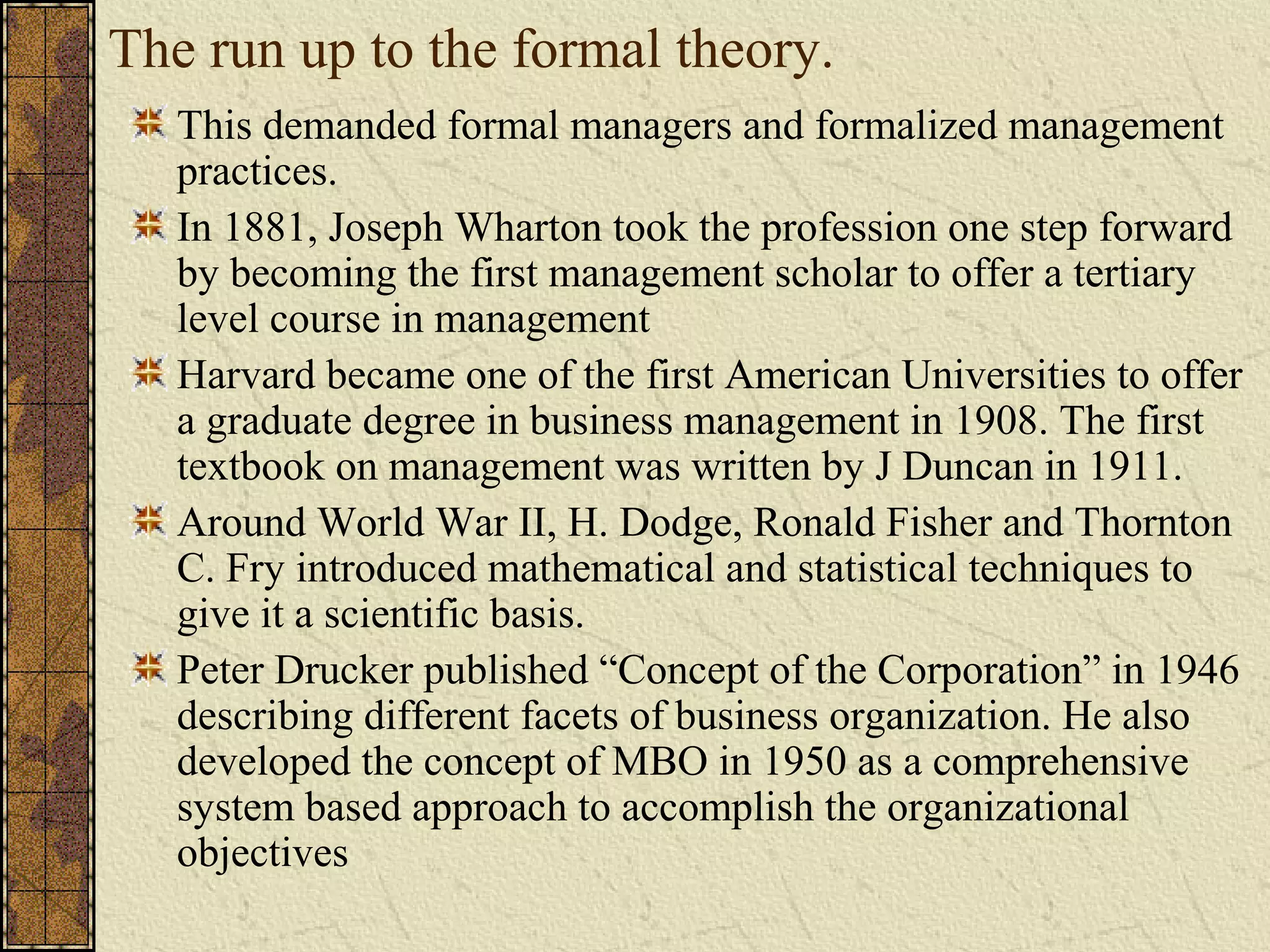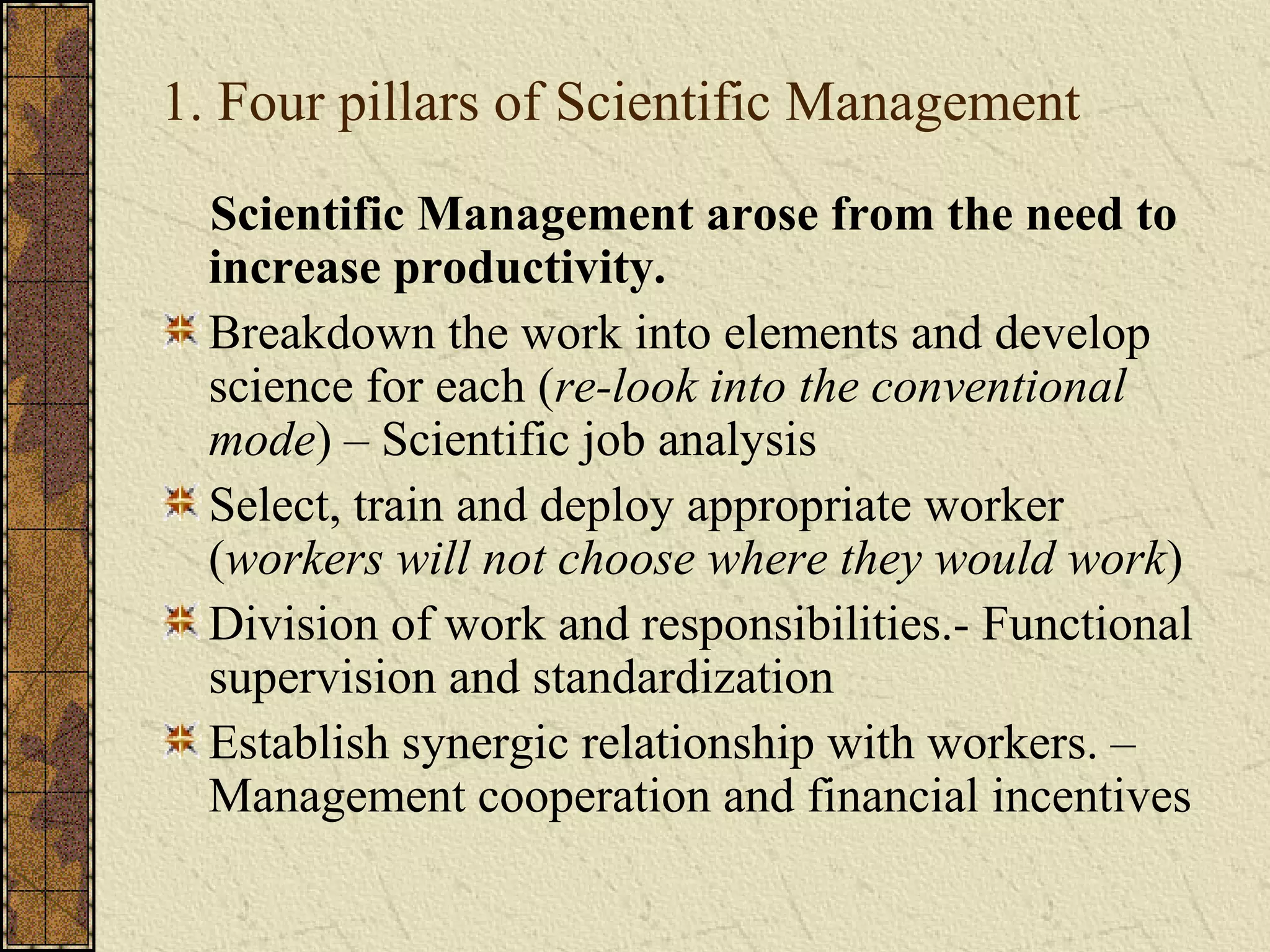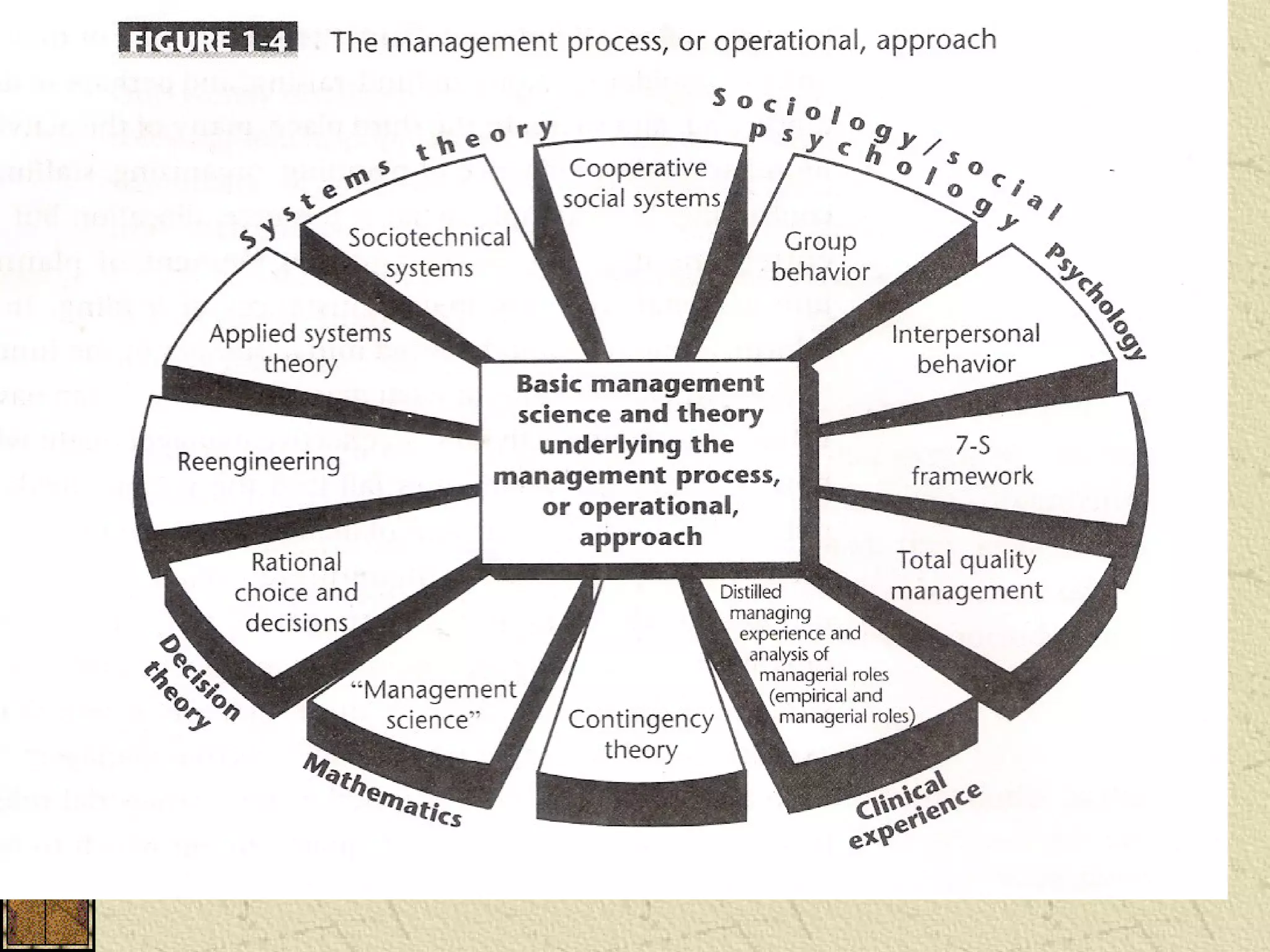1. Management theory has evolved over centuries from early civilizations to the modern discipline it is today.
2. Early contributors included Sun Tzu, Chanakya, and Machiavelli who laid foundations for coordinated group efforts and leadership principles.
3. Scientific management emerged in the early 20th century focusing on economic rationality and efficiency through division of labor and incentives. Contributors included Taylor, Gilbreth, and Gantt.
4. The human relations movement arose in reaction, recognizing social and emotional needs. Hawthorne studies showed group influences on output. Contributors included Mayo, Maslow, and McGregor.
5. Recent decades integrate theories as management addresses increasingly complex problems across







































